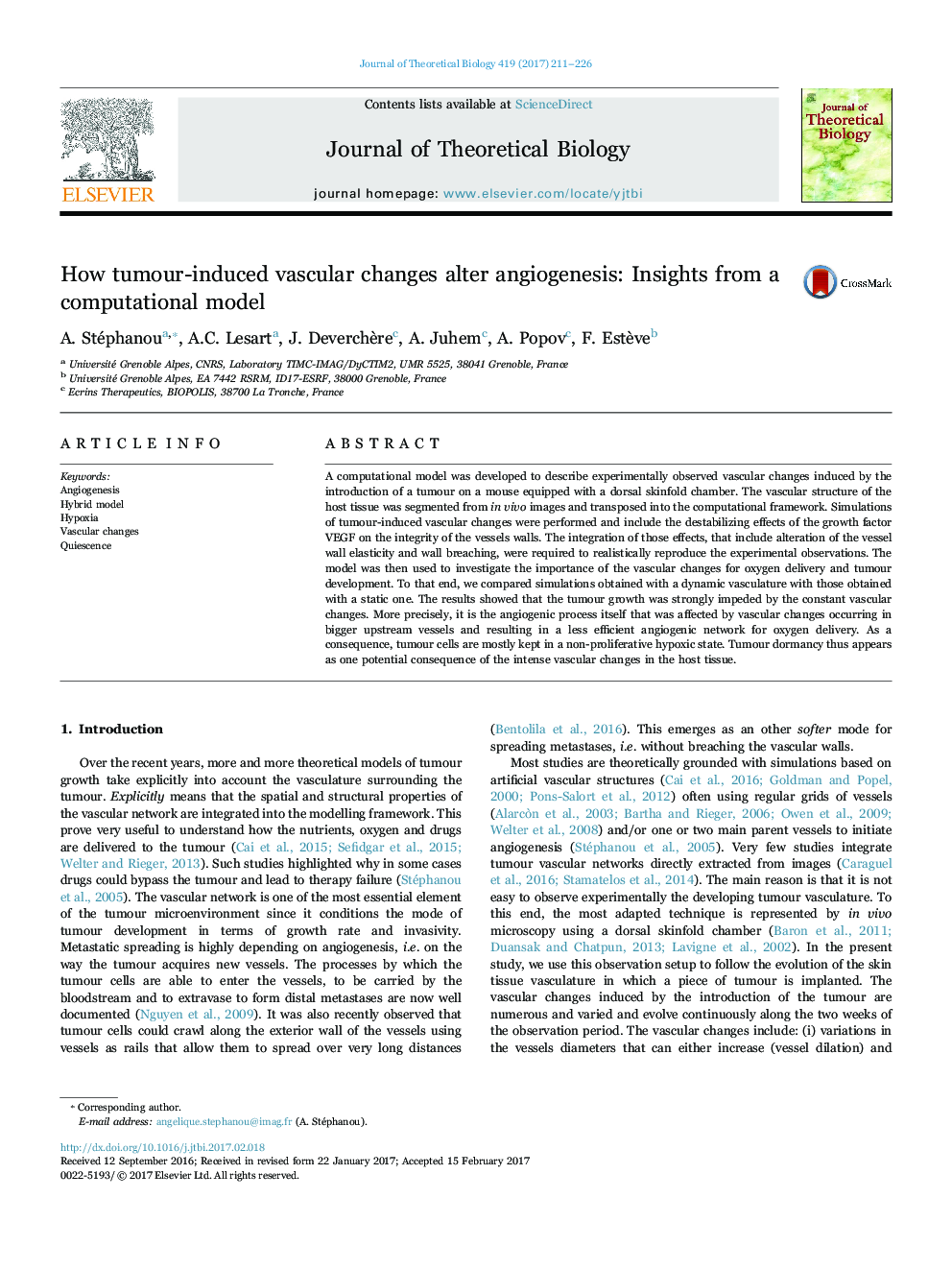| Article ID | Journal | Published Year | Pages | File Type |
|---|---|---|---|---|
| 5760136 | Journal of Theoretical Biology | 2017 | 16 Pages |
Abstract
A computational model was developed to describe experimentally observed vascular changes induced by the introduction of a tumour on a mouse equipped with a dorsal skinfold chamber. The vascular structure of the host tissue was segmented from in vivo images and transposed into the computational framework. Simulations of tumour-induced vascular changes were performed and include the destabilizing effects of the growth factor VEGF on the integrity of the vessels walls. The integration of those effects, that include alteration of the vessel wall elasticity and wall breaching, were required to realistically reproduce the experimental observations. The model was then used to investigate the importance of the vascular changes for oxygen delivery and tumour development. To that end, we compared simulations obtained with a dynamic vasculature with those obtained with a static one. The results showed that the tumour growth was strongly impeded by the constant vascular changes. More precisely, it is the angiogenic process itself that was affected by vascular changes occurring in bigger upstream vessels and resulting in a less efficient angiogenic network for oxygen delivery. As a consequence, tumour cells are mostly kept in a non-proliferative hypoxic state. Tumour dormancy thus appears as one potential consequence of the intense vascular changes in the host tissue.
Related Topics
Life Sciences
Agricultural and Biological Sciences
Agricultural and Biological Sciences (General)
Authors
A. Stéphanou, A.C. Lesart, J. Deverchère, A. Juhem, A. Popov, F. Estève,
